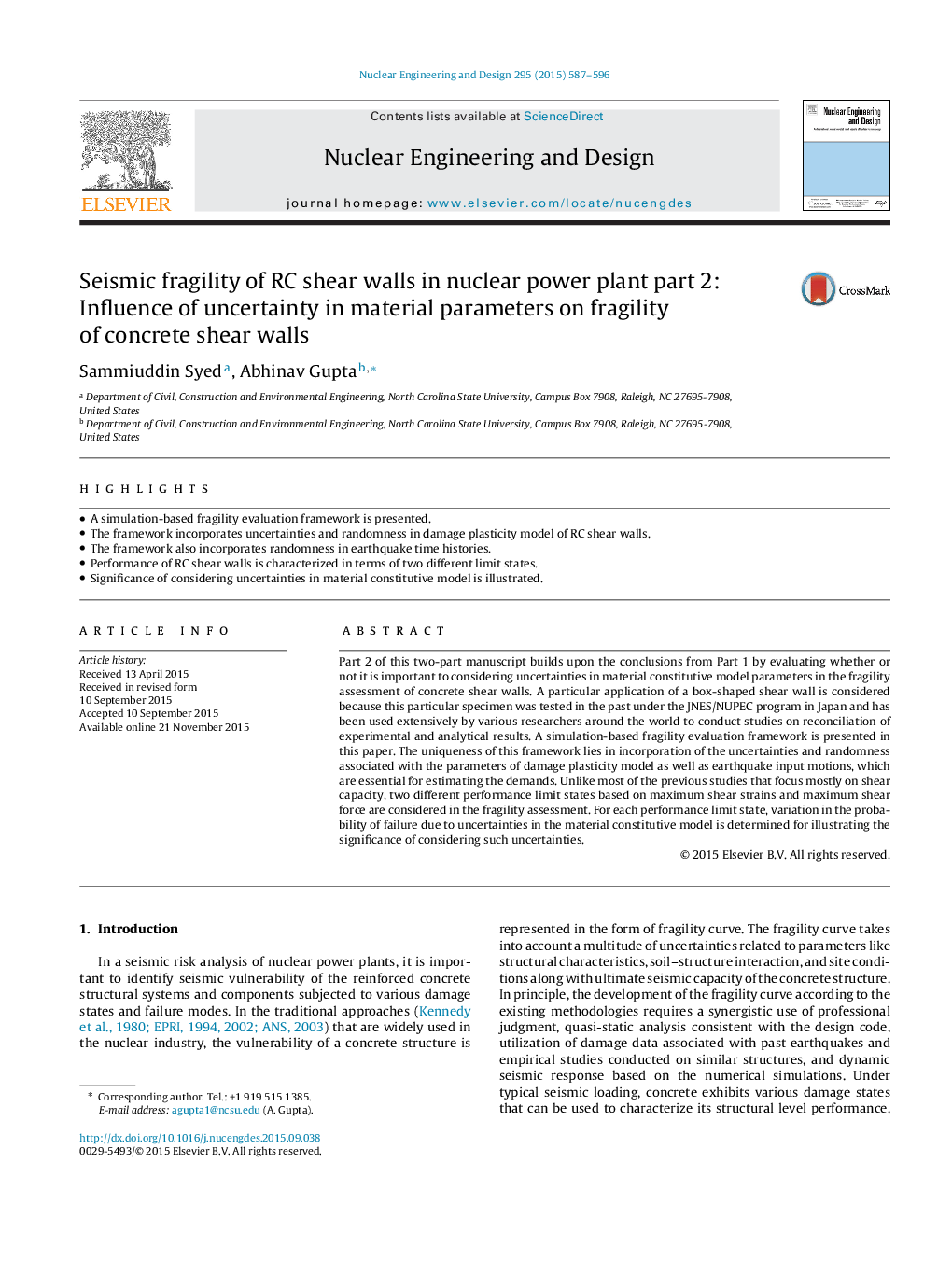| Article ID | Journal | Published Year | Pages | File Type |
|---|---|---|---|---|
| 6760872 | Nuclear Engineering and Design | 2015 | 10 Pages |
Abstract
Part 2 of this two-part manuscript builds upon the conclusions from Part 1 by evaluating whether or not it is important to considering uncertainties in material constitutive model parameters in the fragility assessment of concrete shear walls. A particular application of a box-shaped shear wall is considered because this particular specimen was tested in the past under the JNES/NUPEC program in Japan and has been used extensively by various researchers around the world to conduct studies on reconciliation of experimental and analytical results. A simulation-based fragility evaluation framework is presented in this paper. The uniqueness of this framework lies in incorporation of the uncertainties and randomness associated with the parameters of damage plasticity model as well as earthquake input motions, which are essential for estimating the demands. Unlike most of the previous studies that focus mostly on shear capacity, two different performance limit states based on maximum shear strains and maximum shear force are considered in the fragility assessment. For each performance limit state, variation in the probability of failure due to uncertainties in the material constitutive model is determined for illustrating the significance of considering such uncertainties.
Related Topics
Physical Sciences and Engineering
Energy
Energy Engineering and Power Technology
Authors
Sammiuddin Syed, Abhinav Gupta,
